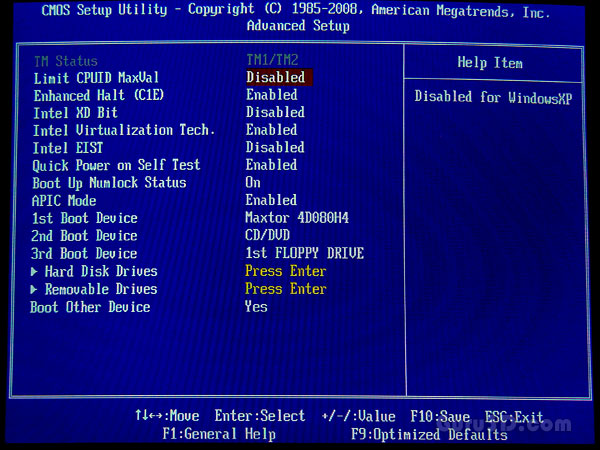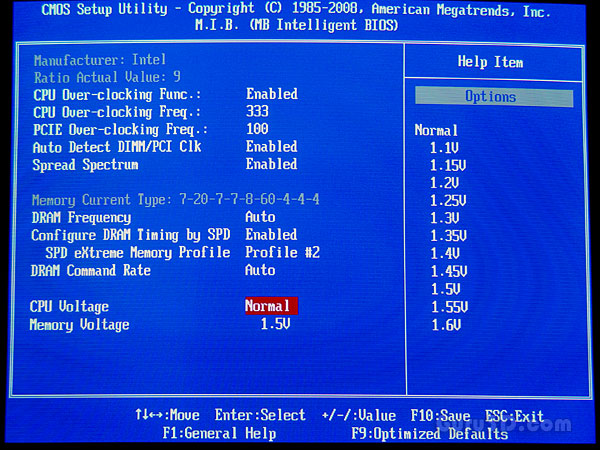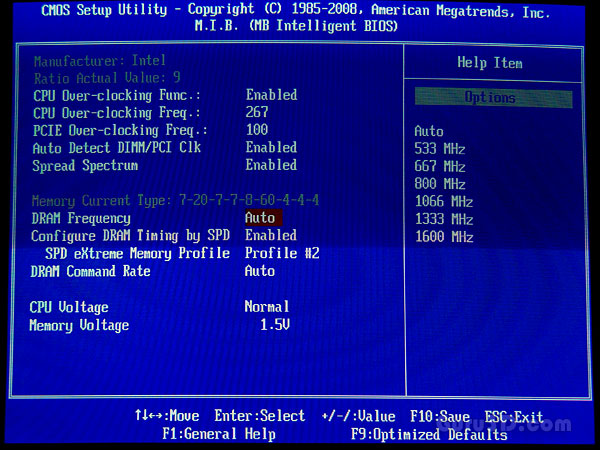5 - Installation - BIOS - Overclocking
Installation
What ECS does well is creating a user-friendly experience. Installation for example is a breeze., You boot into Windows, pop in a driver-cd run a quick install. Once finished, the system restarted a couple of times ... you are good to go. Overall the implementations looks & feels good though, though most devices are supported by VISTA standard already. Nothing to add here.
BIOS options
A bit surprising for a high-end product, the BIOS comes with a okay features yet too limited tweaking options. Also no extra's in the form of fail-safe features. For example (dual BIOS functionality).

A pretty standard and straight-forward award BIOS. First thing you want to do is disable the power saving features; they will hinder your overclocking results.
- PCIe: 90MHz to 150MHz
- CPU Voltage Settings: 1.1V to 1.6V (in 0.05 steps)
- Memory Voltage Settings: to +1.9V

As a stated as a tweaker you will not be very happy with the BIOS.. No chipset voltage regulation, no CPU multiplier features. Voltage settings for the CPU must be in in steps of .05 Volts (which is too large a step), this is really average stuff for a mainboard in this class.

Also no asynchronous memory clocking. The BIOS will use predefined multipliers/dividers on your FSB. We actually had the problem that our 2000 MHz DDR3 memory would not allow us to boot at 1600 MHz. No clue as to why. We had to force the memory at 1066 MHz 1:1 with our FSB.
Also again a memory frequency limitation, I have 2000 MHz capable memory ... why can't I go higher than 1600 MHz or set some dividers/multipliers myself ? If ECS wants reach in the enthusiast segment, they will have to focus on features like these more predominantly.
Overclocking & Tweaking
As a results, our overclocking results where ghastly. Typically with the processor used on the stock Intel air cooler we can reach 3.5 / 3.6 GHz on our Q6600 processor. What you need to do:
- First things first, in the BIOS you'll want to disable everything CE1 and SpeedStep related.
- Set your memory at safe timings and a mellow frequency, increase the FSB until you reach the maximum, lower the multiplier if possible. And so on.
I'll keep it short, we had problems getting the processor to even 3.3 GHz after which we gave up. Unfortunately the X48T-A is not a good overclocker. And yes, we did apply some additional cooling on the passively cooled heatsinks just to be sure. Such a shame really.
I believe the mainboard itself has a very strong foundations, so I hope to see some BIOS updates yielding better results in the near future.
